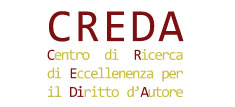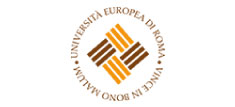L'Autorità Garante della Concorrenza e del Mercato, in data 26 luglio, ha autorizzato con condizioni…
The General Court of the EU admits the registration of a trademark which evokes a shape
di Matteo Aiosa (Via IpLens.org – A critical observatory) On September 13 and 15, 2011, the Perfetti Van Melle Spa filed two applications at Office for Harmonisation in the Internal Market (OHIM) for the registration of the word signs “Daisy” and “Margaritas” as community trademarks for confectionary products. The OHIM and its Board of Appeal rejected both the applications on the basis that the signs didn’t have distinctive character compared to the products since (i) they were attributable to a name of a very common flower, and (ii) confectionary products in the form of a flower were already present on the market. By a decision of December 16, 2015, in the joined cases T-381/13 and T-382/13 (full text here), the General Court of the EU affirmed the validity of the registration of “Daisy” and “Margaritas” trademarks and, as a consequence, annulled the decisions of the OHIM Board of Appeal. The EU Court held that the signs “Daisy” and “Margaritas” do not meet the condition for refusal under article 7, (1), c), of the Community Trademark Regulation 2009/207/EC, because neither the term “Daisy” nor “Margaritas” have a sufficiently direct relationship between the mark and the goods. In fact, the meaning of such signs does not necessarily indicate confectionary products, while the fact that consumers may often intend such trademarks as a shape of confectionary products is not relevant. In particular, the Court argued that both the mentioned words have some other meanings that consumers may keep in mind besides the form of a flower, for example the term “Daisy” refers to a female name or a cartoon character, whereas the term “Margaritas” refers to a female name or a popular cocktail. Furthermore, the Court pointed out that the Board of Appeal failed to provide evidences of the fact that the shape of a daisy flower is widely used in the confectionery sector. Therefore, the circumstance that consumers have occasionally seen sweets in a form of flower and precisely in a daisy form is not sufficiently decisive to conclude that consumers, facing the terms “Daisy” and “Margaritas”, immediately recall such confectionary products. In the light of the above, the Court held that the signs “Daisy” and “Margaritas”, used for confectionary products, have a minimum of distinctiveness. Thus, there was no reason for refusal of registration under article 7, (1), b), of the Community Trademark Regulation 2009/207/EC. In sum, the Court recognized in principle, a ‘sufficient minimum’ of distinctiveness is recognised – allowing the registration – when there is no univocal identification between the verbal sign and a certain kind of a product. However, the doubt arises that if said minimum of distinctiveness concerns the shape of a product, the registration as a trademark involves an exclusiveness of potentially unlimited duration on the shape itself. Now, wouldn’t this risk preempting and bypassing the – more limited – protection by registration as a design (Directive 98/71), thus eventually produce an undue anti-competitive result? 1 febbraio 2016








